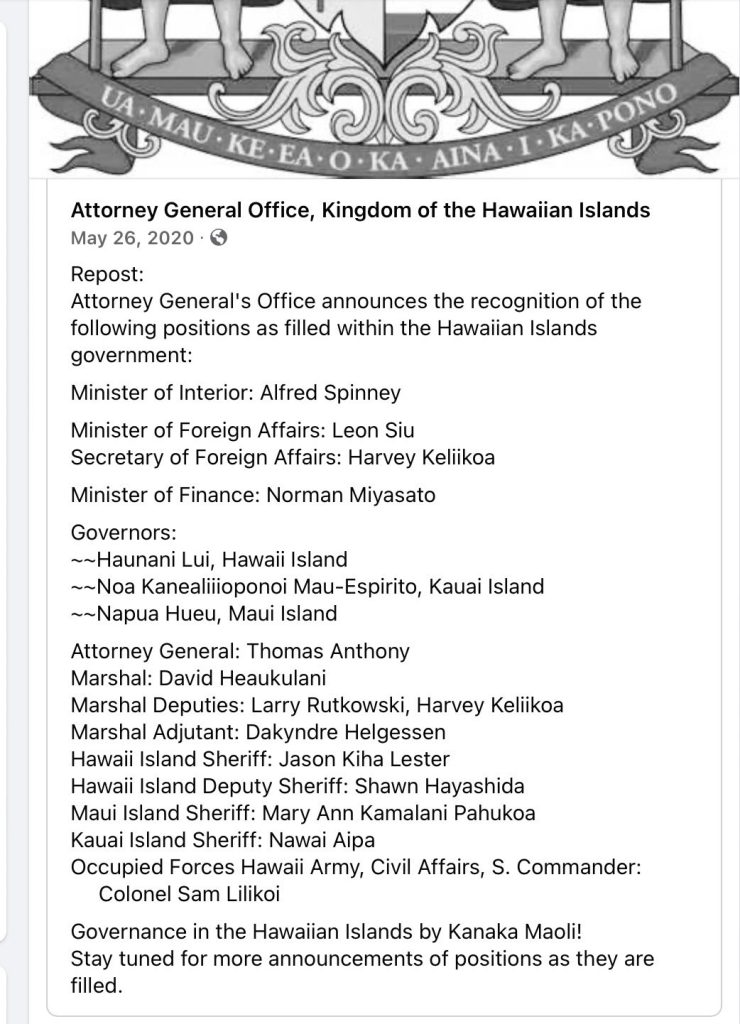Now that a conservative group is preparing for a legal assault on admission policy of Kamehameha Schools, which favors students with “Native Hawaiian ancestry,” I thought I would share my own perspective.
The phrasing of the group’s challenge makes it sound as if Kamehanmeha uses the “Native Hawaiian ancestry” criteria to create an ethnic barrier to entry for those with other ethnic backgrounds, a sort of educational apartheid.
In reality, that is simply not the case. And Kamehameha’s student body confounds attempts at categorization that rely on traditional understandings of ethnicity and race.
I went searching for a statement of what “Native Hawaiian ancestry” means. In my day, I remember being told you needed to claim something like 1/32 Hawaiian blood, based on genealogy. I couldn’t find any statement on Kamehameha’s website about a current blood quantum.
Apparently that’s because this metric is no longer used, if it ever actually was, according to Google’s review.
Ancestry requirement, not blood quantum. Applicants must submit documentation verifying they have at least one ancestor who was Hawaiian before 1959. Unlike the Hawaiian Home Lands program, which has a 50% blood quantum requirement, Kamehameha has no minimum blood quantum.
What does this mean?
Recall that Hawaiians had a very high out-marriage rate of any ethnic group going back 200 years, meaning that a large percentage of Hawaiians married non-Hawaiians beginning soon after western contact. Hawaiian women married or had childrfen with non-Hawaiian men at a high rate.
Hawaii’s census originally categories were simply “Native” and “non-Native.” Early in the 1800s, outmarriage by Hawaiians quickly gave rise to the term “hapa-haole” to refer to those of mixed Hawaiian and European or American ancestry. This later was turned on its head and “part-Hawaiian” became the term for a mixed family background.
Whatever the terminology, the result of a century of dramatic decline in the Native Hawaiian population as a result of introduced diseases, coupled with high outmarriage, has left painfully few “Hawaiians” today who are not also a multitude of other ethnicities, with Hawaiian often being a relatively small part of their overall ancestry.
In high school, I had a girlfriend who graduated from Kamehameha. She looked Hawaiian, but would proudly chant down her heritage, and I recall it went like this: “Hawaiian, Indian, Dutch, Scotch, English, Irish, Chinese, Portuguese, German.”
I’m guessing this is relatively typical, although the specific ethnicities might be different today.
When you look at Kamehameha students as a group, visually they are as multiethnic as you can imagine. There are haole-looking blonds, those who appear asian, and Hawaiians, both those who look stereotypically Hawaiian and those who do not. If you had a large group of Kamehameha students and asked, “How many of you are [fill in the ethnic group]?” a lot of hands would go up. Call out any ethnicity, the response would be the same.
So it’s just wrong to look at Kamehameha as being based on some kind of ethnic segregation. In practice, it is quite the opposite, it’s hard to find any group that has been excluded. Kamehemeha has created probably the most diverse group of students to be found anywhere, rich in a variety of ancestries. It’s a mix that confounds traditional ways of viewing and understanding race and ethnicity, inclusion and exclusion.
The big question remaining, I suppose, is whether the law can accommodate such an understanding.






